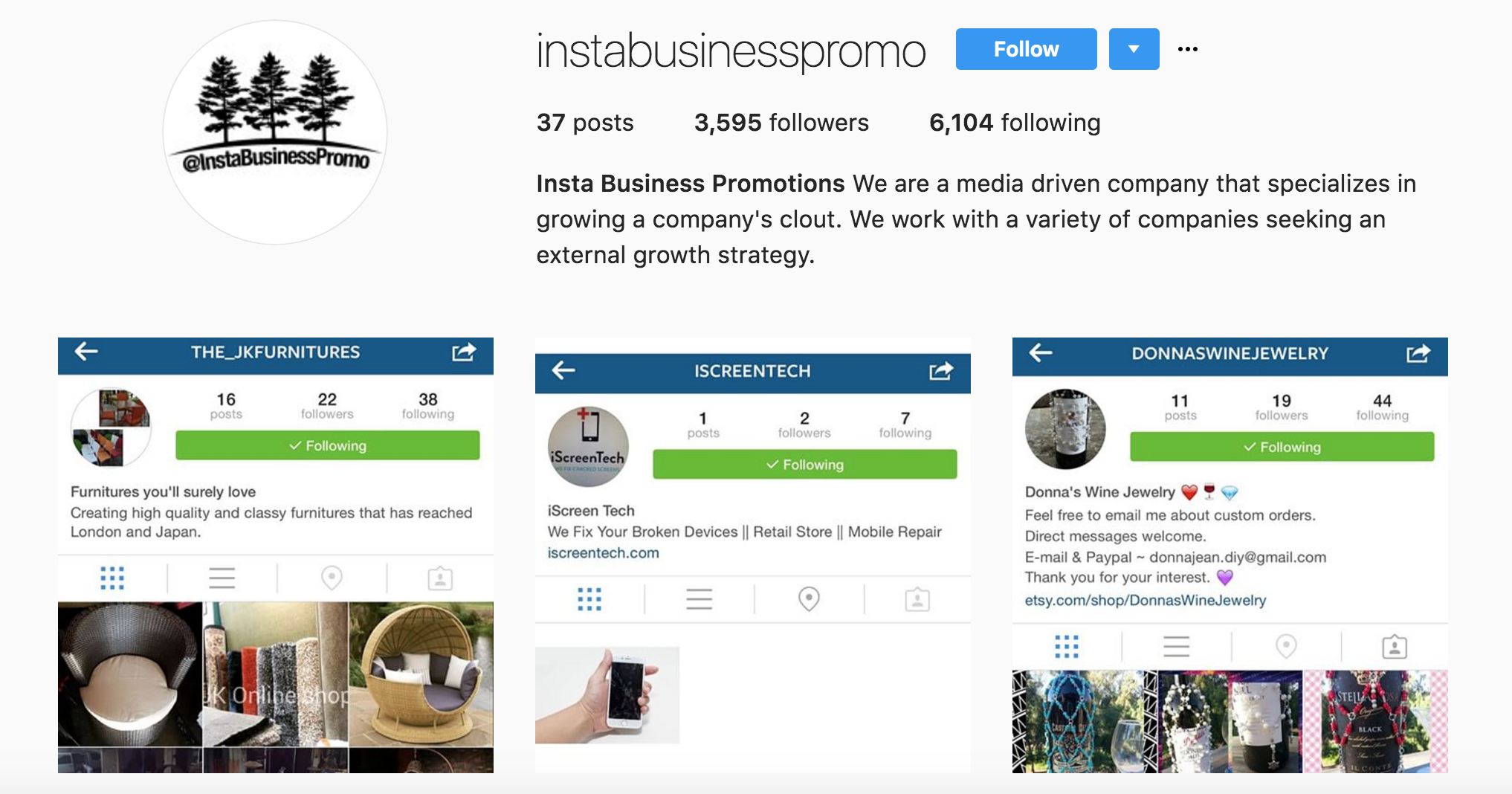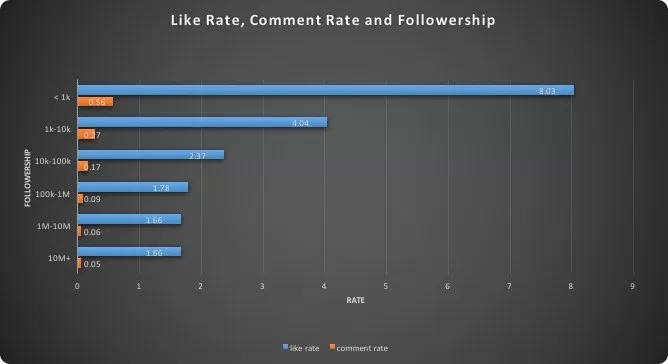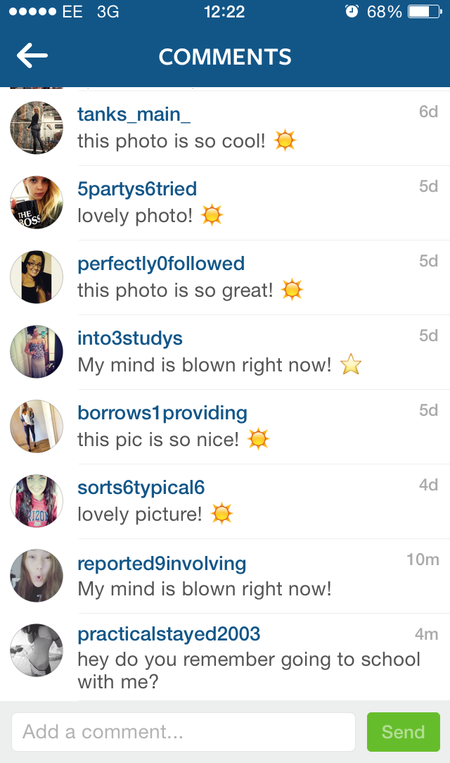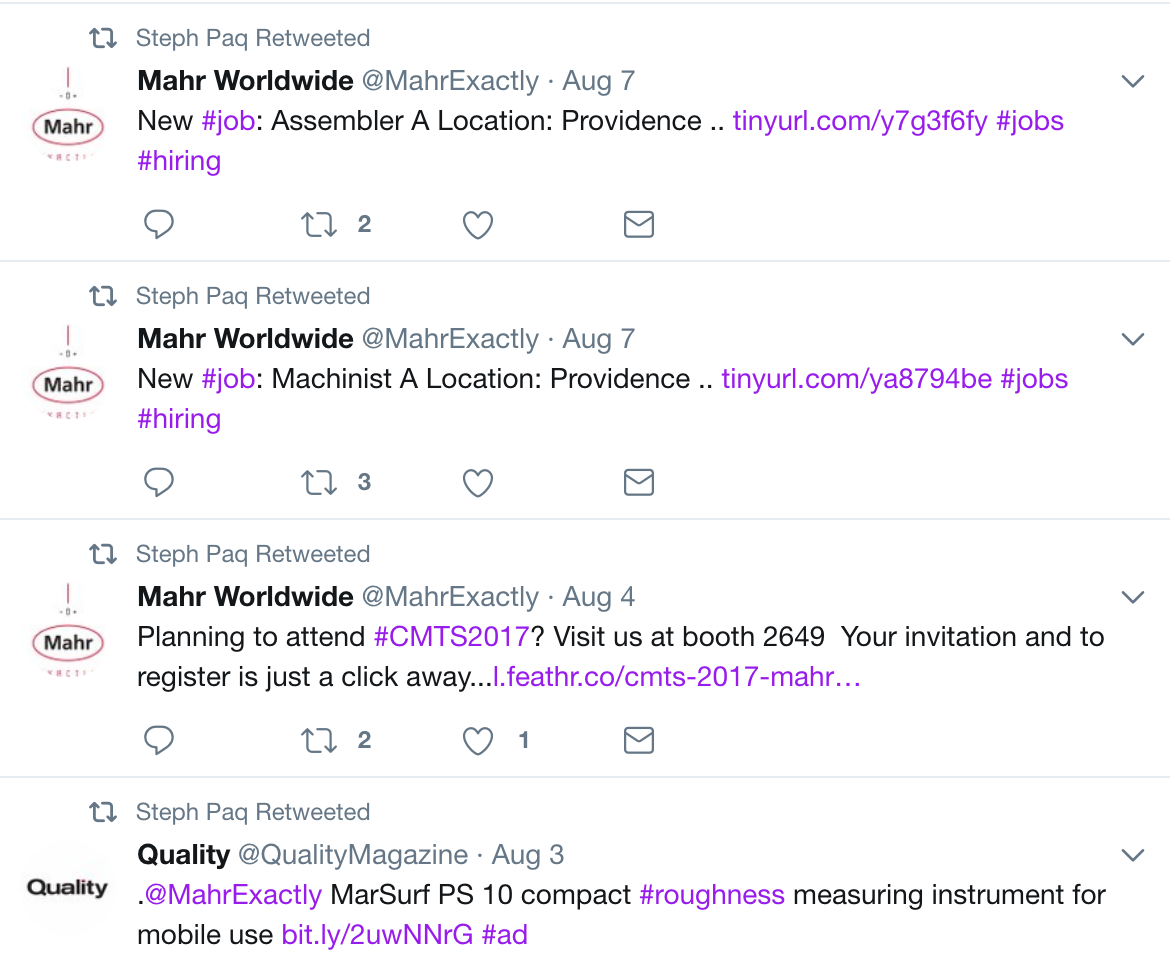Are you starting an influencer marketing campaign for your brand?
Beware of fake social media influencers.
Unfortunately, they are on the rise.
They use a variety of tactics to pad their follower and engagement numbers to make them appear larger than they are.
Even as companies like Instagram take severe measures to shut down these bad third-party services, there are still millions out there hoping to attract your attention.
Fake social media influencers make your brand look bad and waste your precious marketing dollars.
No one likes to get duped.
So, how you can sniff out whether your influencer is the real deal?
Here are 10 ways to spot a fake influencer.
Too Many Followers
Yes, there is such a thing as too many.
If you have never heard of this influencer before, they should not have the same number of followers as Taylor Swift.
Of course, that’s an extreme example.
But, social media influencers with as few as 5,000 followers are being courted by brands, and numbers like that are easy to fake.
Many services let you buy followers.
Here’s how it works: a fake influencer pays a service to get a certain amount of followers.
The service uses bots to artificially increase their followers by following other accounts and liking or commenting on posts based on relevant hashtags.
Many people then respond in turn by following the user back.
The problem is the bot often unfollows this person to inflate the fake social media influencers follow/following ratio.
Consider what your potential influencer is doing to earn their follower count.
Does it seem feasible that people would be interested in the content they share?
For example, the account below exclusively posts screenshots of other Instagram account profiles.
It’s hard to believe that more than 3,500 people would find that fascinating.
 Their Followers Aren’t Real
Their Followers Aren’t Real
Besides bots, these services often create fake accounts to follow the influencer.
It is more efficient for bot services to create accounts according to a formula.
Take a look at the potential influencer’s followers and see if you notice any trends such as:
- Multiple followers in a row that all use the same username structure.
- Multiple followers that are following tens of thousands of accounts each but have barely posted any content themselves.
- Followers who use stock photography for their profile photo and still receive decent engagement despite terrible content.
If the majority of the influencer’s followers have questionable user photos, no photos at all, or don’t have any followers themselves, they are not real.
Suspiciously High Engagement Ratio
By now, everyone knows it’s not about the numbers of followers you have, but the engagement.
On many platforms, the more engagement a post has, the higher up it shows in search results for a specific hashtag.
This is especially true for YouTube videos where view count is heavily weighted in the algorithm.
Just as there are bots to boost your follower count, there are also services that fake engagement.
These services let people buy likes or comments so they appear legitimate and their posts seem popular.
Plus, the more engagement they have, the more likely they are to attract real (although naive) fans.
Some fake social media influencers even band together to create fake engagement groups.
Multiple users work together to regularly comment on and like each other’s posts to make the accounts appear highly engaged.
If it looks too good to be true, it often is.
According to Markerly, typical engagement numbers are between one and five percent of a user’s follower numbers.

To determine the influencer’s engagement ratio, look at their five most recent posts.
Add up the total number of likes and comments for each post, and then divide that by their total number of followers.
The answer is their engagement ratio.
Check that number on the chart above.
If it is way lower or higher than what’s expected for their follower count, you are wasting your time with a fake influencer.
Comments are All Generic
Bots are everywhere now, so everyone can expect some spam followers or comments.
Spam comments tend to use lots of emojis and say things like “cool pic!” or “great!” which may appear applicable to a variety of posts.

Source: IG Reviews
Look through your potential influencer’s comments.
If they look anything like the above photo, they are buying comments. A real influencer will have real comments from fans with an actual message to share, like the example below:

Every Single Post is a 10
Social media influencers develop a following by consistently posting great content.
Unless they’re a celebrity who just joined the platform, there is no reason an influencer would have a massive following without the content to back it up.
Some social media influencers will delete underperforming posts to make their more successful posts look like the norm.
This tricks brands into thinking they have higher engagement levels than they really do.
Unless they’re Kim Kardashian, be wary of social media influencers whose posts all seem incredibly popular.
A genuine account will have a variety of posts, some of which are more popular than others.
Posts Look to be Generated by a Robot
On the flip side, an influencer who shares mostly uninspiring content should be a big red flag.
This is especially true when it’s paired with high engagement or follower counts.
A true influencer’s content is carefully crafted, curated, and original.
They refrain from using poor quality or stock photography.
On Instagram, a fake influencer has to do a bit more work finding stock photos and images they can share.
On Twitter, it’s much easier to fake activity.
All an influencer must do is set their account to automatically retweet posts according to a hashtag.
It looks like they’re active even though they have nothing original to share.
 Hashtag Abuse
Hashtag Abuse
One of the best ways to attract new, genuine fans is by appending hashtags to your posts.
Unfortunately, this is also one of the best ways to attract bots.
Many follower or engagement bot services rely on hashtags to find relevant accounts.
This has become such a problem on Instagram, that the company started hiding posts that include too many hashtags from search.
Sometimes a person is just an amateur instead of deliberately spammy.
Either way, you are better off avoiding users who overload their posts with hashtags, hide them in a comment, or use hashtags that are not at all relevant to their posts.
Wondering how many hashtags is too much?
Union Street Media offers a helpful guide:

Sphere of Influence Exists in a Vacuum
Because it is a lot of work to run a con, many social media influencers will devote themselves to a single platform.
Go to Google and search for their real name and username.
If they don’t have similar followings on at least one other social network, they’re not a real influencer.
Even worse, if you can’t find any information about them at all, they could be catfishing you.
Influencer marketing company MediaKix ran a campaign earlier this year to show how easy it is for people to build fake accounts and attract brand attention.
Both of their fake accounts, ‘calibeachgirl310,’ and ‘wanderinggirl,’ don’t exist anywhere else on the web either by their Instagram name or their “real” name.
Given their follower counts in the tens of thousands, this doesn’t make much sense.
Savvier social media influencers will take care to validate themselves and appear more professional to brands by getting a verified badge on Twitter or Instagram.
If you see a check by your influencer’s name, that’s a good sign you can trust them.
However, an influencer doesn’t have to be verified to be real, and for those of you working with micro-influencers, keep in mind being verified is often an honor reserved for larger accounts.
Sudden Growth in Engagement or Followers
Some tools take you behind the scenes so you can unmask these fake followers.
For example, SocialBlade shows you historical data for YouTube, Instagram, and Twitter so you can see how an influencer has grown in influence over time.
While there may be some peaks for certain content releases, the overall growth of an influencer should look like a sloping hill, not a rocket ship taking off.
Emily Schuman is an author, clothing designer, and lifestyle blogger at Cupcakes & Cashmere with more than 350K followers on Instagram.
SocialBlade shows steady growth for her over the past few years.

If you are going after blog influencers, check out SimilarWeb to see their website traffic.
Check which countries are driving the majority of their traffic, and consider whether it makes sense.
For example, if most of their site visits come from Brazil, but they’re a lifestyle blogger based in San Diego, that should raise a red flag.
Suspicious Actions
If you see one of the signs above, ask the influencer about it.
There may be a perfectly reasonable explanation.
If they sidestep or refuse to answer the question, take that as a sign they are a con artist.
Similarly, when asking the influencer about their experience working with other brands, especially if they have a larger following, they should have a concrete answer that reads “real.”
A true influencer acts like a real person.
They have a reputation to uphold, which means they won’t necessarily bend over backward to promote your brand.
They’ll want to ensure your brand or product jibes with their audience, and they can promote you in a way which aligns with their content strategy.
Everything about your interaction with the influencer should feel authentic—that authenticity is what helped them grow their fan base in the first place.
If something feels off, trust your gut and tactfully end the relationship.
It’s just not worth it to work with someone you can’t trust, especially when trusting them with your brand.
Fake Social Media Influencers Aren’t So Clever
Fake social media influencers think they’re pretty clever, but they’re easy to spot.
Keep the signs above in mind as you seek out influencers for your brand, and you’ll be able to tell the real from the fake.
